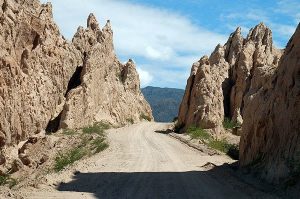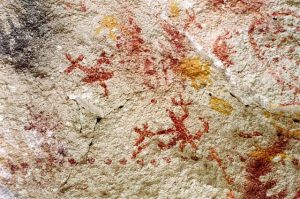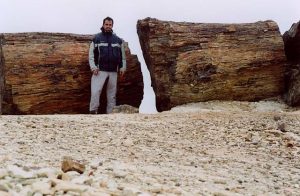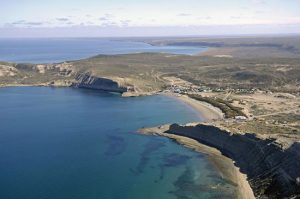Perito Moreno Glacier, Patagonia
The Perito Moreno glacier is found inside the Nacional Los Glaciares park in Santa Cruz. Different perspectives and views of the huge glacier are possible when taking one of the access roads. The glacier dates back two million years.
Inside the Glaciers National Park (Santa Cruz) you will find the Perito Moreno. The measures of this glacier are approximately 5km in length and 60meters rising above the Argentino lake. The difference present with other glaciers is that not only ice detachments are present but you can also see huge blocks of ice simply breaking in half..
The wall of this glacier imposes itself on the Icebergs channel. This process gives origin to a large body of water. When waters in the Brazo Rico side of lake Argentino start growing, they also start pressing against this big mass of ice. Parts of this wall soften and fall into the water making extremely loud noises.
Different guided trips take you to this 2million year old glacier. The opportunities to admire this mass of ice and walks over it, all offer optional perspectives.
You can enjoy boat trips scheduled at Puerto Bandera that last between 1 and 6 hours. They can take you to the iceberg channel in the Brazo Rico; from here you can have a fantastic view of the southern walls of the glacier.
Another adventure accessible for almost everybody is the mini-trekking. The only required characteristic is an adventure spirit. A boat that leaves the Bajo de las Sombras bay (nearby the glaciers observation station) takes you to the glacier site, and with hiking equipment trained guides lead you to out of the way spots.
If the options studied do not include the aspect of taking tours to the Perito Moreno you can visit the park on vehicles and at least have some views of the glacier. Surrounding temperatures and weather allow for the ice structures to stay together all year round.
Location of Perito Moreno
The Perito Moreno Glacier is a glacier located in the Los Glaciares National Park in the south west of Santa Cruz province, Argentina. It is one of the most important tourist attractions in the Argentine Patagonia.
The 250 km2 (97 sq mi) ice formation, and 30 km (19 mi) in length, is one of 48 glaciers fed by the Southern Patagonian Ice Field located in the Andes system shared with Chile. This icefield is the world’s third largest reserve of fresh water.
Trekking in El Chalten, Patagonia Argentina
Cerro Fitz Roy or Monte Fitz Roy, is a mountain (‘cerro’) located near the El Chaltén village, in the Southern Patagonian Ice Field, in Patagonia, on the border between Argentina and Chile. It is also sometimes called Cerro Chaltén, after the Tehuelche (Aonikenk) word meaning “smoking mountain,” due to a cloud that usually forms in the top of the mountain. However it was only one of a number of peaks the Tehuelche called Chaltén.
As he describes in his book, “Viaje a la Patagonia Austral”, Francisco Moreno first saw the mountain on 2 March 1877. Since the native inhabitants also called other mountains Chaltén, he named it Fitz Roy, in honour of Robert FitzRoy, who as captain of the Beagle had travelled up the Santa Cruz River in 1834 and charted large parts of the Patagonian coast.
El Calafate, Patagonia Argentina
El Calafate is a small town in Patagonia, Argentina. It is situated in the southern border of Lake Argentino, in the southwest part of the Santa Cruz Province, about 320 km Northwest from Río Gallegos. Its name comes from a little bush with yellow flowers very common in Patagonia, with dark blue berries: the calafate (Berberis buxifolia); the word comes from the word “calafate”, which is Spanish for “caulk”.
El Calafate is an important tourist destination as the hub to visit different parts of the Los Glaciares National Park, including the Perito Moreno Glacier (one of the most visited in the world) and the Cerro Chaltén and Cerro Torre.
El Chalten, Patagonia Argentina
El Chaltén is a small mountain village in Santa Cruz Province, Argentina. It is located in the riverside of Río de las Vueltas, within the Los Glaciares National Park (section Reserva Nacional Zona Viedma) at the base of Cerro Torre and Cerro Fitz Roy mountains, both popular for climbing. For this reason this village is well-visited by trekkers and climbers.
The village was built purely for tourism purposes, in 1985. It is 200km north of El Calafate.
“Chaltén” is a tehuelche word meaning smoking mountain, as they believe it was a volcano for its peak is most of the time covered by clouds. Other visited tracks and sights are Torre Glacier, Laguna Capri, Piedras Blancas Glacier, Chorrillo del Salto and Laguna de los Tres.
The village provides free camping and national park information for visitors, as well as commercial camping (with showers) and a very limited number of beds, catering mostly for backpackers. The tourist trade has spawned a few restaurants and basic shops in town, and some of the accommodations provide internet and phone access and show regular movies. Other than that, the town is fairly far removed from the normal flow of news and communication, even during high season (November-February). The town is nearly deserted during off-season (the southern hemisphere winter).
Upsala Glaciar, Patagonia Argentina
The Upsala Glacier is a large valley glacier in Argentina’s Los Glaciares National Park. It flows out from the Southern Patagonian Ice Field, which also feeds the nearby Perito Moreno Glacier. The terminus of the glacier is at Lago Argentino. The Upsala Glacier is well known for its rapid retreat, which many see as evidence for global warming.
The name comes from Uppsala University, which sponsored the first glaciological studies in the area.
The glacier’s almost continual recession up until 1999 has recently slowed (as of 2003). The previous acceleration in ice motion during the two decades preceding 1999 may have been augmented by the release of backstress when the glacier retreated beyond the islands in Brazo Upsala.
Glaciers History in Patagonia
Thorough explorations include the expeditions of Federico Reichert (1913-1914), Alberto de Agostini (1931), and Harold William Tilman and Jorge Quinteros (1955-1956); as well as Eric Shipton (1960-61). First full (North-South) crossing of the field was accomplished in 1998 by Pablo Besser, Mauricio Rojas, José Montt and Rodrigo Fica. Nevertheless some areas of the field remain largely unexplored
From the air, initial exploration was conducted in 1928-9 by Gunther Plüschow after whom a glacier is named. It was further studied in 1943 by aerial photographs made by the United States Air Force on request of the Chilean government.
The National Park og the Glaciers, Patagonia
Parque Nacional Los Glaciares is a national park in the Santa Cruz Province, in Argentine Patagonia. It comprises an area of 4459 km². In 1981 it was declared a World Heritage Site by UNESCO.
The national park, created in 1937, is the second largest in Argentina. Its name refers to the giant ice cap in the Andes range that feeds 47 large glaciers, of which only 13 flow towards the Atlantic Ocean. The ice cap is the largest outside of Antarctica and Greenland. In other parts of the world, glaciers start at a height of at least 2,500 meters above mean sea level, but due to the size of the ice cap, these glaciers begin at only 1,500m, sliding down to 200m AMSL, eroding the surface of the mountains that support them.
The Southern Patagonia Ice Field
The Southern Patagonia Ice Field is the third biggest extension of continental ice after Antarctica and Greenland, located at the Southern Patagonic Andes between Argentina and Chile. It is the bigger of two remnant parts of the Patagonian Ice Sheet.
It extends from parallels 48° 20′ S to 51° 30′ S for approximately 350 kilometres, and has an area of 16,800 km², of which 14,200 km² belong to Chile and 2,600 km² to Argentina. Fifty kilometers of the Chile–Argentina border, between Mount Fitzroy and Cerro Murallon, remain undefined.
The ice mass feeds dozens of glaciers in the area, among which are the Upsala (902 km²), Viedma (978 km²) and Perito Moreno (258 km²) in the Los Glaciares National Park in Argentina, and the Pío XI Glacier or Bruggen Glacier (1,265 km², the biggest and longest in the southern hemisphere outside of Antarctica), O’Higgins (820 km²), Grey (270 km²) and Tyndall (331 km²) in Chile. The glaciers going to the west flow into the fjords of the Patagonian channels of the Pacific Ocean; those going to the East flow into the Patagonian lakes Viedma and Argentino, and eventually, through the rivers de la Leona and Santa Cruz, to the Atlantic Ocean.
An important part of the ice field is protected under different national parks, such as the Bernardo O’Higgins and Torres del Paine in Chile, and the aforementioned Los Glaciares in Argentina.








